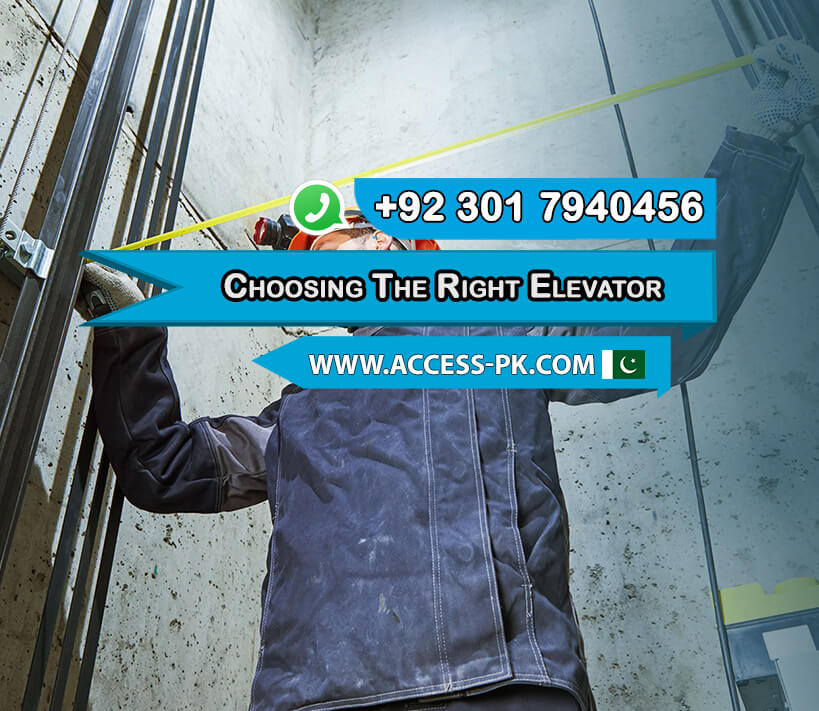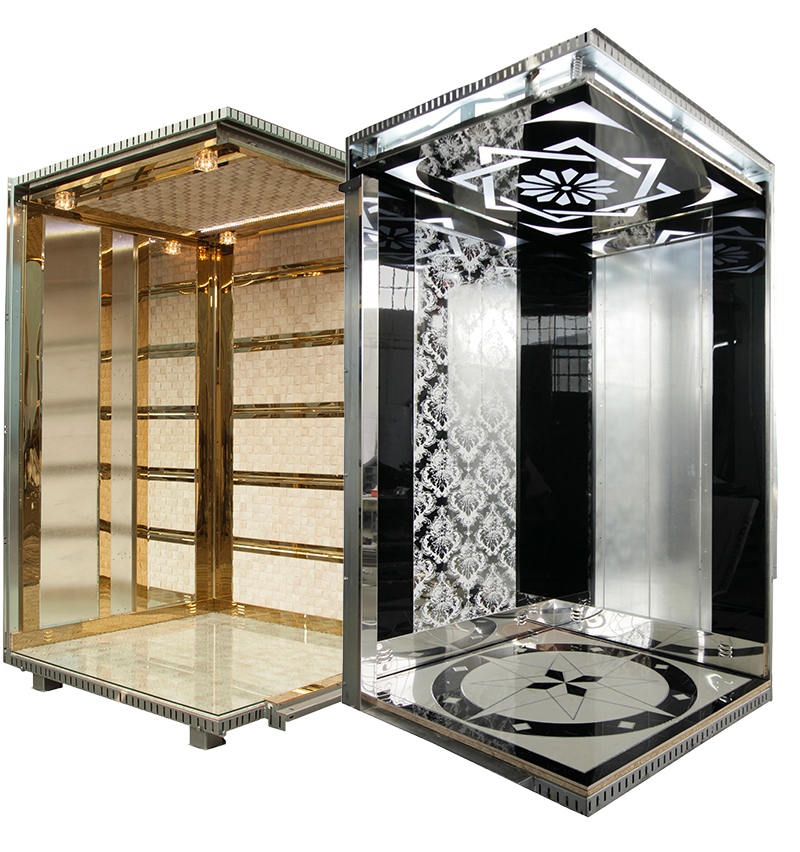Preparing your building for a smooth and efficient elevator installation involves several crucial steps. First, assess the structural integrity and space availability to ensure that your building can accommodate the elevator. It is essential to check if there is adequate room for the elevator shaft, machinery, and other components. Additionally, consider the building’s layout to avoid potential disruptions during installation. Access Technologies, owned by Imran Rafi, specializes in providing tailored elevator services that ensure seamless integration with your existing structure.
Next, evaluate the power and electrical requirements for the elevator. The installation process requires a reliable power source to operate the elevator smoothly and efficiently. Ensure that your building’s electrical system can handle the added load without compromising safety. Consulting with a professional who understands elevator services can help in upgrading or modifying your electrical infrastructure if necessary. Transitioning smoothly to the installation phase depends on having these electrical needs addressed early.
Finally, ensure compliance with local building codes and safety regulations. Meeting these standards is vital for both legal and safety reasons. Safety standards overview includes thorough inspections and certification processes to guarantee that your installation adheres to all required guidelines. By proactively addressing these requirements, you can avoid potential delays and ensure a safe, efficient elevator installation.
Get Free QuotesUnderstanding the Requirements for Elevator Installation

To ensure a smooth and efficient elevator installation, it’s crucial to thoroughly understand the requirements involved. Assessing Building Structure is the first step. Begin by evaluating your building’s structural integrity to confirm it can support the weight and space demands of the elevator. Inspect the current layout to determine if modifications are necessary to accommodate the elevator shaft and machinery. This assessment helps in identifying any potential challenges and addressing them proactively, ensuring a seamless installation process. Power and Electrical Needs are the next critical consideration. The elevator system requires a reliable and adequate power supply to function effectively. Assess your building’s existing electrical infrastructure to ensure it can handle the additional load without any issues.
Assessing Building Structure
Before installing an elevator, it’s vital to assess the building structure. Start by evaluating the structural integrity of your building to ensure it can support the elevator’s weight. Examine the space available for the elevator shaft and machinery to confirm that it fits within the existing layout. This assessment includes checking load-bearing walls and potential obstructions. If the current structure cannot accommodate the elevator, consider necessary modifications. By addressing these structural needs early, you can avoid complications during installation and ensure a smooth and efficient process.
Power and Electrical Needs
When preparing for elevator installation, evaluating power and electrical needs is essential. The elevator system requires a stable and sufficient power supply to operate efficiently. Check if your building’s existing electrical system can support the additional load. This might involve upgrading electrical panels, circuits, or wiring to meet the elevator’s requirements. Ensure that the power supply is reliable to prevent disruptions. Working with a professional experienced in elevator services can help you address these needs effectively, contributing to a smooth and efficient elevator installation.
Local Code Compliance
Ensuring compliance with local building codes is crucial for a safe and smooth elevator installation. Familiarize yourself with the regulations governing elevator installations in your area. These codes cover safety standards, construction practices, and accessibility requirements. Compliance is necessary to avoid legal issues and ensure the elevator operates safely. Engage with experts or consult local authorities to confirm that your installation meets all relevant codes. This adherence to local regulations ensures a seamless process and contributes to the overall efficiency and safety of the elevator system.
Get Free QuotesChoosing the Right Elevator for Your Building

Choosing the right elevator for your building is essential for achieving a smooth and efficient elevator installation. Start by considering the type of elevator that best suits your building’s needs. Options include passenger elevators, freight elevators, and service elevators, each designed for different purposes and capacities. Evaluate factors such as the building’s height, the anticipated traffic volume, and the specific requirements of the building’s users. For example, high-rise buildings may require larger, high-capacity elevators, while smaller structures might benefit from more compact models. Consulting with a provider of elevator services can help you select an elevator that aligns with your needs and ensures a seamless installation process.
| Elevator Type | Cost |
|---|---|
| Stair lifts | 810000 to 1770000/Pkr |
| Home Lifts | 1200000 to 2000000/Pkr |
| DIY Food Elevator | 2230000 to 3350000/Pkr |
| Two-Story Home Lift | 7020000 to 8420000/Pkr |
| Hospital Bed Elevators | 4150000 to 8300000/Pkr |
| Panoramic Elevator | 3180000 to 3870000/Pkr |
Additionally, consider the design and aesthetic aspects of the elevator. The elevator should complement the building’s interior design and architecture while meeting functionality needs. Options for customization include the type of doors, finishes, and control panels. Choose features that enhance user experience and maintain operational efficiency. By carefully selecting an elevator that meets both practical and aesthetic requirements, you contribute to a smooth and efficient elevator installation. Ensuring that the elevator’s design aligns with the building’s overall style and function helps integrate it seamlessly into the existing environment.
Get Free QuotesPreparing the Site for Installation: Key Steps

Preparing the site for elevator installation involves several critical steps to ensure a smooth and efficient process. Start by clearing the installation area of any obstructions and preparing it for the elevator’s components. This includes removing any furniture, fixtures, or other items that might interfere with the installation. Ensure that the space is accessible to installation teams and that there is adequate room for moving and assembling the elevator parts. Proper site preparation helps avoid delays and ensures that the installation proceeds without unnecessary interruptions, leading to a more efficient process.
Next, address any structural modifications that might be needed to accommodate the elevator. This could involve reinforcing walls, adjusting floors, or creating a dedicated elevator shaft. Work closely with professionals who specialize in elevator services to ensure these modifications meet safety and design requirements. Additionally, ensure that all necessary permits and inspections are completed before installation begins. By thoroughly preparing the site and addressing any structural or logistical issues, you contribute to a smooth and efficient elevator installation, minimizing the risk of complications during the process.
Get Free QuotesEnsuring Compliance with Safety and Building Codes

Ensuring compliance with safety and building codes is essential for a smooth and efficient elevator installation. First, familiarize yourself with the relevant safety standards that govern elevator installations, which include guidelines on load capacity, emergency systems, and operational safety features. These standards are designed to protect users and ensure the elevator functions reliably. Additionally, adhere to building code requirements, which specify the structural, electrical, and accessibility criteria for the installation. Meeting these regulations is crucial for both safety and legal compliance. Finally, inspection and certification are required to confirm that the elevator meets all safety and building code standards before it becomes operational.
Safety Standards Overview
Ensuring compliance with safety and building codes is crucial for achieving a smooth and efficient elevator installation. The process begins with a thorough understanding of Safety Standards Overview. Safety standards for elevators are designed to protect users and ensure reliable operation. These standards cover aspects such as load capacity, emergency systems, and operational safety features. Adhering to these guidelines helps prevent accidents and ensures that the elevator operates safely. Engaging with professionals who specialize in elevator services can provide valuable insights into these standards, ensuring your installation meets all necessary safety requirements.
Building Code Requirements
Your Building Code Requirements are another critical component. Building codes dictate the structural and operational criteria that must be met during installation. These codes cover various elements, including the elevator’s installation, electrical systems, and accessibility features. Compliance with these regulations is essential not only for safety but also for legal reasons. Ensure that your installation meets all local and national codes by consulting with experts who understand these requirements. This adherence helps to avoid potential legal issues and ensures the installation process is smooth and efficient.
Inspection and Certification
Finally, Inspection and Certification are essential steps to complete the process. Before the elevator becomes operational, it must pass rigorous inspections to ensure it meets all safety and building code requirements. Certification from relevant authorities confirms that the installation complies with all necessary standards. This step is vital for ensuring the elevator’s safe operation and integrating it seamlessly into the building’s infrastructure. By addressing these compliance aspects, you contribute to a smooth and efficient elevator installation, safeguarding both users and the building itself.




